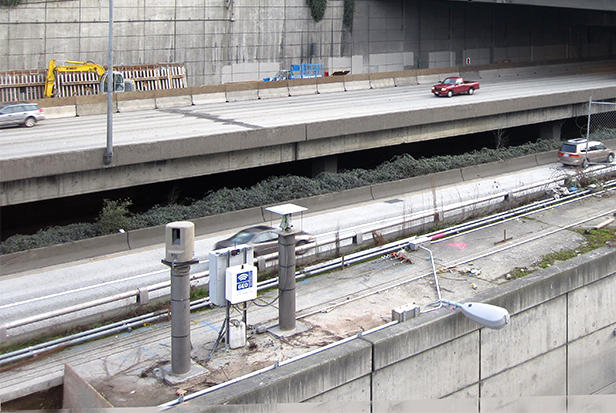GEO-Instruments has a range of solutions to monitor the behaviour of an asset or land and quantify its deformation.

Deformation monitoring helps engineers assess risk, prevent potential damage, and evaluate the effectiveness of remediation measures.
Using dedicated sensors, GEO-Instruments can monitor deformation - changes in the shape or position - of natural formations, such as slopes and embankments, and man-made structures, such as underground openings, tunnel linings, embankments, and retaining walls.
Challenging spaces
On open, outdoor projects, references can be used to calculate absolute movements in the monitoring area. In confined spaces like tunnels or sewers however, you don’t always have access, and need to use specific sensors instead to measure deformation of the structure with the help of strain gauges for instance.
In environments such as live sewers, where traditional electric sensors aren’t allowed, GEO-Instruments can install several exclusive fibre optic strain sensors at designated sections.
Accurate measurement
Monitoring the strain in different parts of a structure, a tunnel for example, can produce reports that show which segments are in compression, and which are in tension.
The behaviour of the structure can then be directly correlated to the works by matching events and activities.
Using processed data from strain readings, our clients can analyse the discrete measurements of deformation and verify the integrity of their assets. For instance, displacements in a tunnel can be processed as convergence and used to verify the clearance specifications of the tunnel.
Prisms combined with an AMTS system can also be used to measure track movements. Using several adjacent ratio values, cant, twist and deflection can be calculated and stored in virtual sensors. These virtual sensors are then monitored with trigger values set.